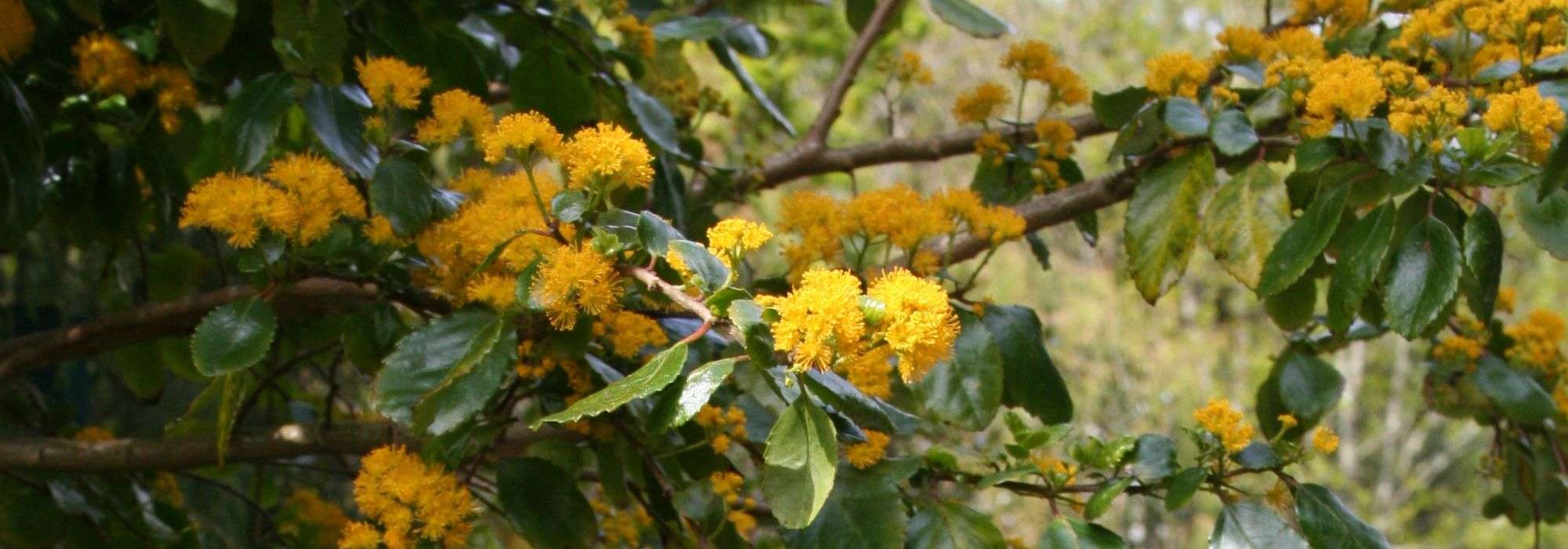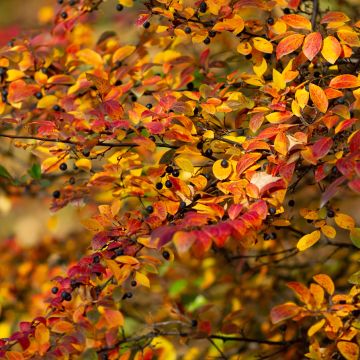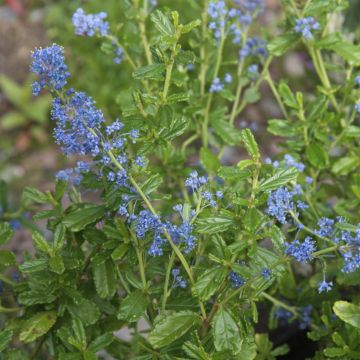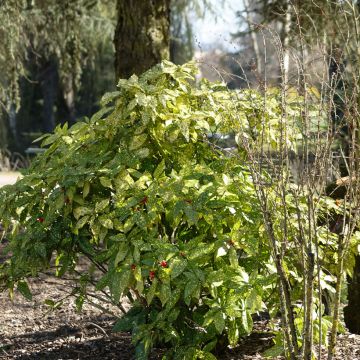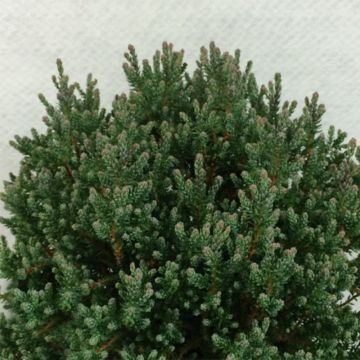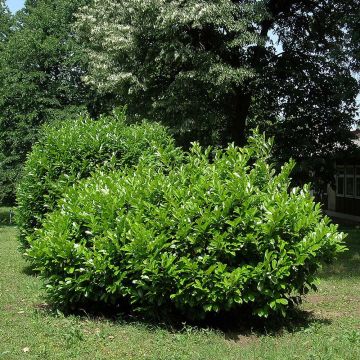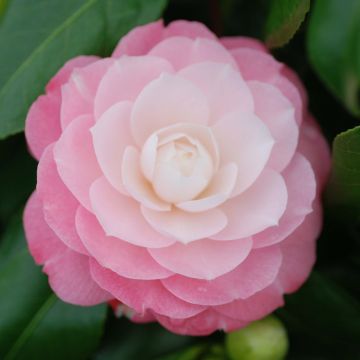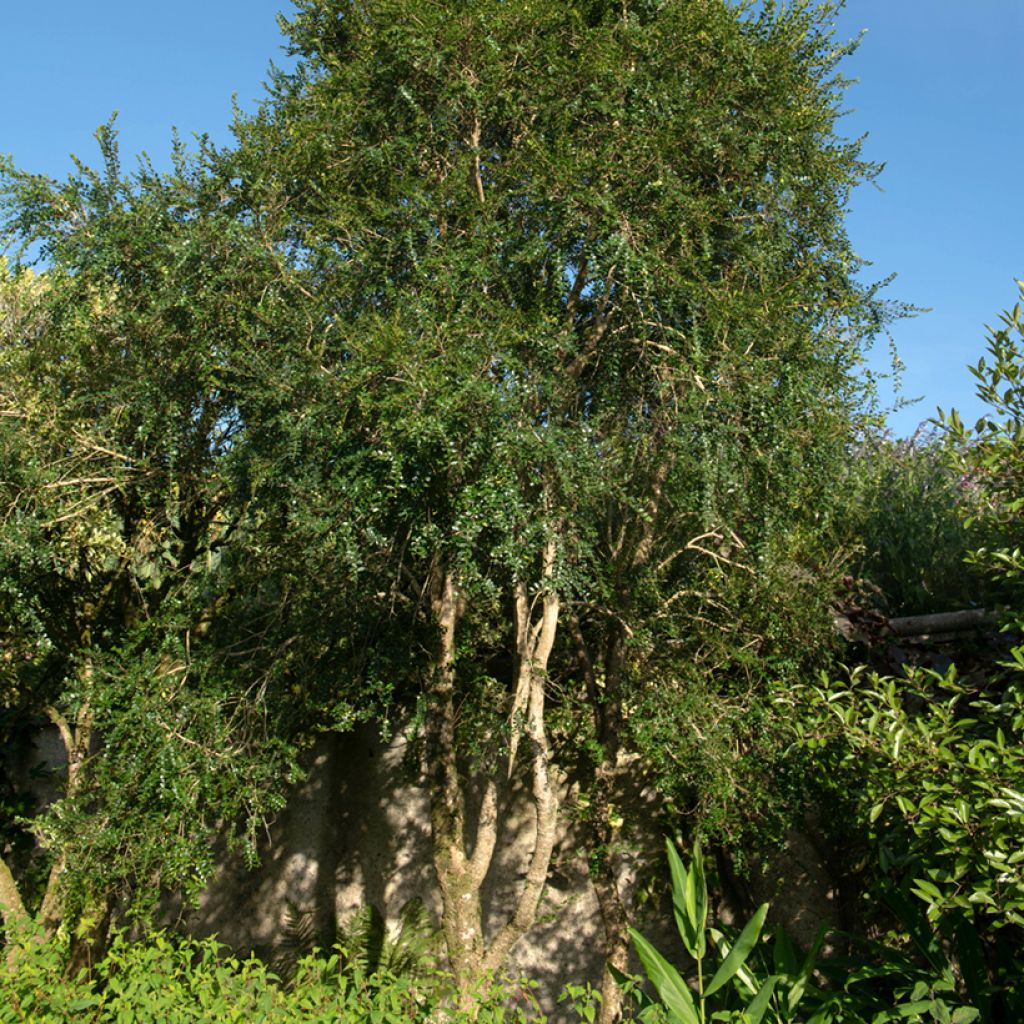

Azara microphylla
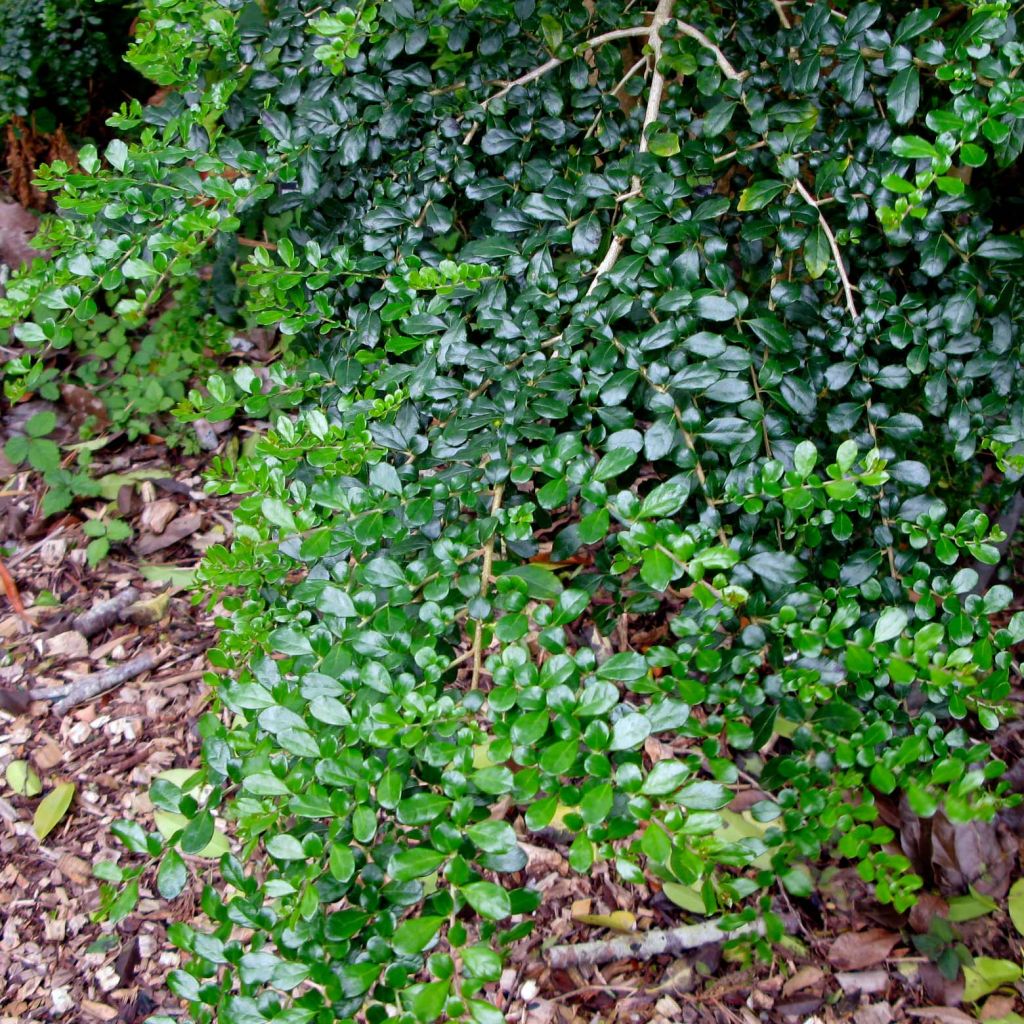

Azara microphylla
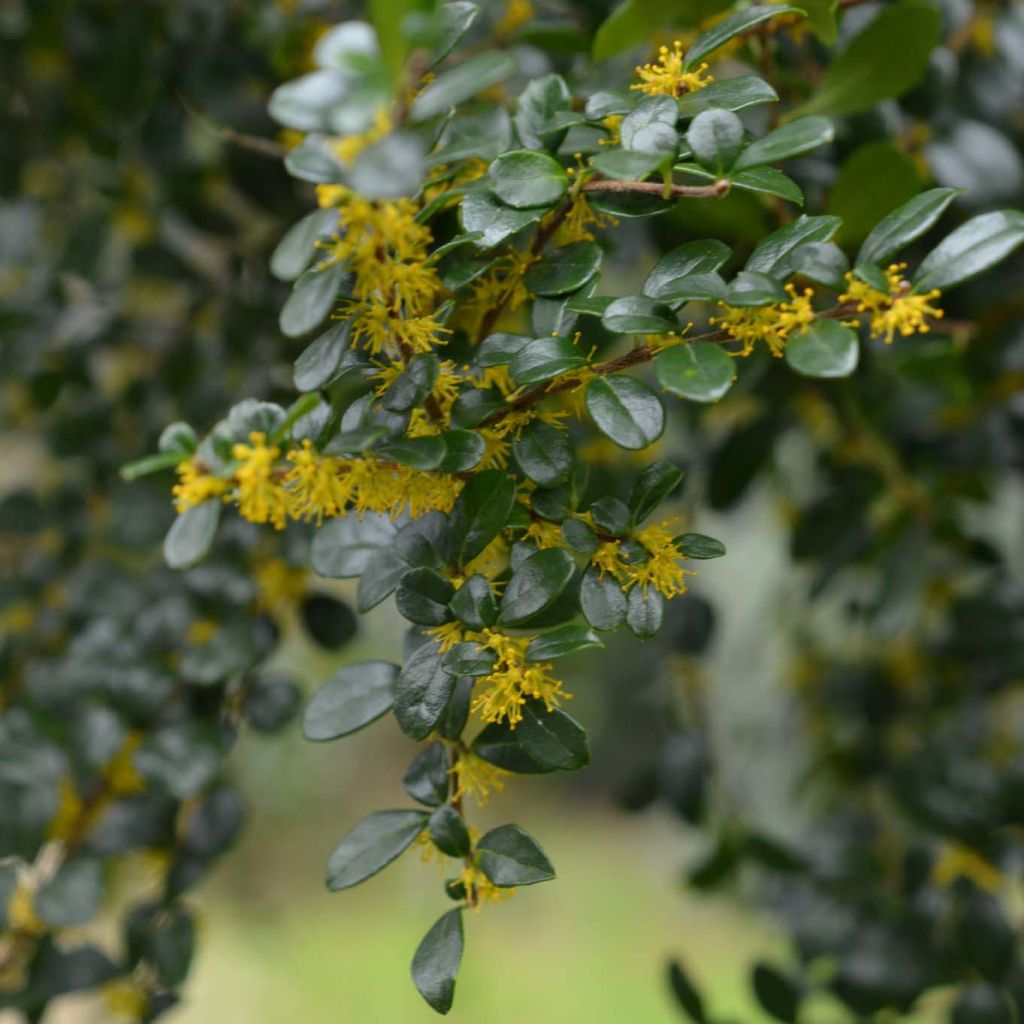

Azara microphylla
Azara microphylla
Azara microphylla
Boxleaf Azara, Small-leaved Azara
Beautiful, let's see if it will revive.
Isabelle, 29/10/2022
Special offer!
Receive a €20 voucher for any order over €90 (excluding delivery costs, credit notes, and plastic-free options)!
1- Add your favorite plants to your cart.
2- Once you have reached €90, confirm your order (you can even choose the delivery date!).
3- As soon as your order is shipped, you will receive an email containing your voucher code, valid for 3 months (90 days).
Your voucher is unique and can only be used once, for any order with a minimum value of €20, excluding delivery costs.
Can be combined with other current offers, non-divisible and non-refundable.
Home or relay delivery (depending on size and destination)
Schedule delivery date,
and select date in basket
This plant carries a 24 months recovery warranty
More information
We guarantee the quality of our plants for a full growing cycle, and will replace at our expense any plant that fails to recover under normal climatic and planting conditions.
Would this plant suit my garden?
Set up your Plantfit profile →
Description
The Azara microphylla, or Small-leaved Azara, is sometimes called Chilean Mimosa because of its pleasantly scented yellow flowers. It is a large bush or small ornamental tree that is not very common in our gardens, buzzing with bees in early spring, with shiny evergreen foliage. It is truly elegant and highly appreciated for its vanilla-scented flowers that can perfume an entire garden. While it can survive in almost all regions without heavy frosts, it will only flower where winters are very mild.
The Azara microphylla, is a plant belonging to the Salicaceae family, which includes willows and poplars. It originates from the rainforests of Chile and Argentina and tolerates shaded exposures. This large bush with moderate growth and a fountain-like habit will reach a maximum height of 4m (13ft 1in) and a width of 2.50m (8ft 2in) in favourable climates. Its flexible branches bear small, single, alternate, ovate, coarsely toothed leaves of a shiny dark green colour. They measure about 3cm (1.2in) in length and persist on the tree if the winter is not too harsh. The abundant and nectar-rich flowering takes place in February-March in the south, April in the north. The flowers, without petals but with numerous yellow stamens, are grouped in small pale mustard yellow globules (like those of mimosas) with long peduncles. These small pompoms are themselves gathered in small umbels of 3-4cm (1.2-1.6in) in diameter, in the axils of the leaves. Their fragrance, which spreads far and wide, is described as having notes of vanilla and chocolate. The fruit, when it forms, is a small round and white berry which ripens in August.
The Azara are among the most beautiful evergreen bushes for spring and summer. They form sumptuous hedges in oceanic or Mediterranean climates. The Azara microphylla can be planted as a single specimen or against a sheltered wall to increase its hardiness. It pairs well in a shrub bed or in a flowering hedge with ceanothus, Choisya, Abelia, escallonia, bitter orange (Citrus aurantiaca), Poncirus, Olearia or Pittosporum.
Azara microphylla in pictures
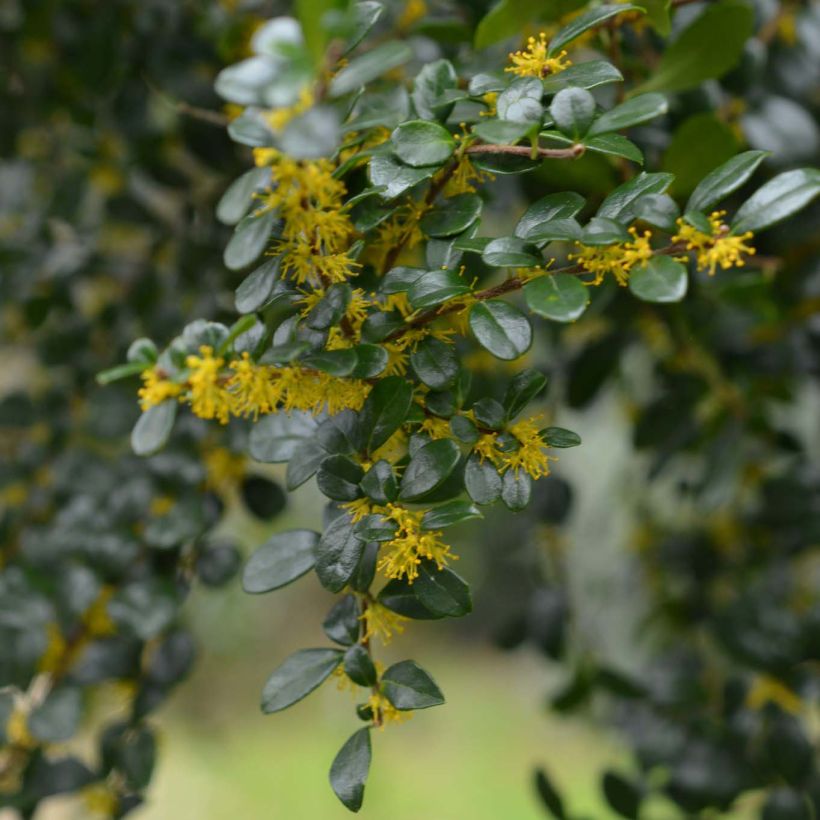

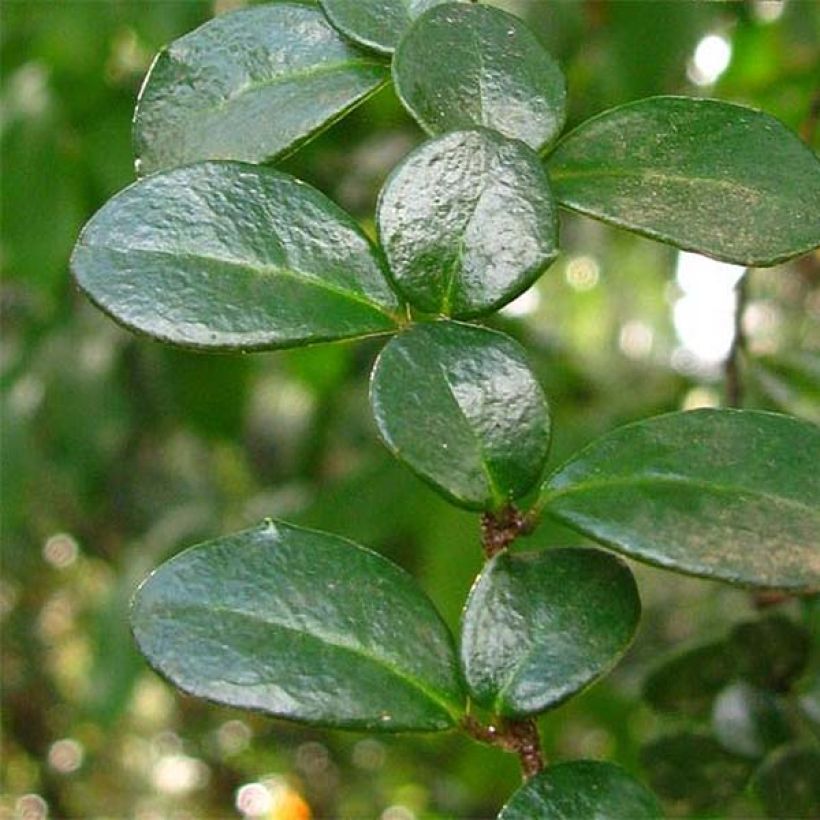

Plant habit
Flowering
Foliage
Botanical data
Azara
microphylla
Salicaceae (Flacourtiaceae)
Boxleaf Azara, Small-leaved Azara
South America
Planting and care
Azara microphylla is best planted in spring or autumn, in regions without severe frosts. Its hardiness does not exceed -10/-12°C (14/10.4°F) in very healthy, well-drained soil. It can tolerate all types of soil and exposures, but it prefers sunny exposures that are not scorching and light soils that are not too chalky, retaining some moisture in summer. The soil should be carefully prepared for planting, and the garden soil should be enriched with well-rotted compost, sand, and leaf mold. Pruning is not necessary, but it tolerates pruning after flowering, which encourages it to branch out and maintain a denser habit. This plant does not suffer from any particular pests.
Planting period
Intended location
Care
Planting & care advice
-
, onOrder confirmed
Reply from on Promesse de fleurs
Similar products
Haven't found what you were looking for?
Hardiness is the lowest winter temperature a plant can endure without suffering serious damage or even dying. However, hardiness is affected by location (a sheltered area, such as a patio), protection (winter cover) and soil type (hardiness is improved by well-drained soil).

Photo Sharing Terms & Conditions
In order to encourage gardeners to interact and share their experiences, Promesse de fleurs offers various media enabling content to be uploaded onto its Site - in particular via the ‘Photo sharing’ module.
The User agrees to refrain from:
- Posting any content that is illegal, prejudicial, insulting, racist, inciteful to hatred, revisionist, contrary to public decency, that infringes on privacy or on the privacy rights of third parties, in particular the publicity rights of persons and goods, intellectual property rights, or the right to privacy.
- Submitting content on behalf of a third party;
- Impersonate the identity of a third party and/or publish any personal information about a third party;
In general, the User undertakes to refrain from any unethical behaviour.
All Content (in particular text, comments, files, images, photos, videos, creative works, etc.), which may be subject to property or intellectual property rights, image or other private rights, shall remain the property of the User, subject to the limited rights granted by the terms of the licence granted by Promesse de fleurs as stated below. Users are at liberty to publish or not to publish such Content on the Site, notably via the ‘Photo Sharing’ facility, and accept that this Content shall be made public and freely accessible, notably on the Internet.
Users further acknowledge, undertake to have ,and guarantee that they hold all necessary rights and permissions to publish such material on the Site, in particular with regard to the legislation in force pertaining to any privacy, property, intellectual property, image, or contractual rights, or rights of any other nature. By publishing such Content on the Site, Users acknowledge accepting full liability as publishers of the Content within the meaning of the law, and grant Promesse de fleurs, free of charge, an inclusive, worldwide licence for the said Content for the entire duration of its publication, including all reproduction, representation, up/downloading, displaying, performing, transmission, and storage rights.
Users also grant permission for their name to be linked to the Content and accept that this link may not always be made available.
By engaging in posting material, Users consent to their Content becoming automatically accessible on the Internet, in particular on other sites and/or blogs and/or web pages of the Promesse de fleurs site, including in particular social pages and the Promesse de fleurs catalogue.
Users may secure the removal of entrusted content free of charge by issuing a simple request via our contact form.
The flowering period indicated on our website applies to countries and regions located in USDA zone 8 (France, the United Kingdom, Ireland, the Netherlands, etc.)
It will vary according to where you live:
- In zones 9 to 10 (Italy, Spain, Greece, etc.), flowering will occur about 2 to 4 weeks earlier.
- In zones 6 to 7 (Germany, Poland, Slovenia, and lower mountainous regions), flowering will be delayed by 2 to 3 weeks.
- In zone 5 (Central Europe, Scandinavia), blooming will be delayed by 3 to 5 weeks.
In temperate climates, pruning of spring-flowering shrubs (forsythia, spireas, etc.) should be done just after flowering.
Pruning of summer-flowering shrubs (Indian Lilac, Perovskia, etc.) can be done in winter or spring.
In cold regions as well as with frost-sensitive plants, avoid pruning too early when severe frosts may still occur.
The planting period indicated on our website applies to countries and regions located in USDA zone 8 (France, United Kingdom, Ireland, Netherlands).
It will vary according to where you live:
- In Mediterranean zones (Marseille, Madrid, Milan, etc.), autumn and winter are the best planting periods.
- In continental zones (Strasbourg, Munich, Vienna, etc.), delay planting by 2 to 3 weeks in spring and bring it forward by 2 to 4 weeks in autumn.
- In mountainous regions (the Alps, Pyrenees, Carpathians, etc.), it is best to plant in late spring (May-June) or late summer (August-September).
The harvesting period indicated on our website applies to countries and regions in USDA zone 8 (France, England, Ireland, the Netherlands).
In colder areas (Scandinavia, Poland, Austria...) fruit and vegetable harvests are likely to be delayed by 3-4 weeks.
In warmer areas (Italy, Spain, Greece, etc.), harvesting will probably take place earlier, depending on weather conditions.
The sowing periods indicated on our website apply to countries and regions within USDA Zone 8 (France, UK, Ireland, Netherlands).
In colder areas (Scandinavia, Poland, Austria...), delay any outdoor sowing by 3-4 weeks, or sow under glass.
In warmer climes (Italy, Spain, Greece, etc.), bring outdoor sowing forward by a few weeks.






























